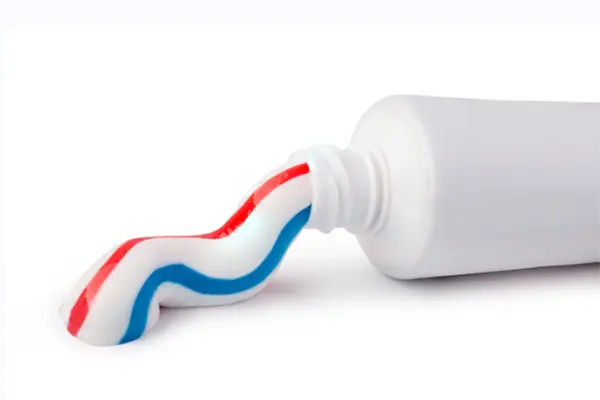Trisodium Phosphate in Toothpaste: Friend or Foe? Unveiling the Science Behind the Ingredient
For decades, trisodium phosphate (TSP), a white, granular compound, has been a mainstay in household cleaners and degreasers. More recently, it has sparked curiosity for its surprising presence in some toothpastes. But why exactly is trisodium phosphate in toothpaste, and is it something to celebrate or be wary of?
TSP’s Cleaning Power: A Friend to Teeth?
Trisodium phosphate boasts several cleaning properties that make it appealing for oral hygiene:
- Stain removal: TSP’s ability to break down organic matter helps remove surface stains caused by coffee, tea, and tobacco.
- Polishing agent: TSP acts as a mild abrasive, gently buffing away plaque and surface discolorations, leaving teeth feeling smoother.
- Tartar control: TSP’s phosphate ions might help prevent tartar buildup by interfering with the formation of calcium phosphate crystals.

The Potential Downside of TSP in Toothpaste:
While its cleaning power seems attractive, concerns regarding TSP in toothpaste have emerged:
- Irritant potential: TSP can irritate sensitive gums and oral tissues, causing redness, inflammation, and even painful ulcers.
- Enamel erosion: Excessive use of abrasive TSP, especially in concentrated forms, might contribute to enamel erosion over time.
- Fluoride interaction: Some studies suggest TSP might interfere with the absorption of fluoride, a crucial cavity-fighting agent.
Weighing the Evidence: Is Cereal TSP in Toothpaste Safe?
The level of TSP used in toothpastes, often referred to as “cereal TSP” due to its finer particle size, is significantly lower than in household cleaners. This reduces the risk of irritation and enamel erosion, but concerns linger.
The American Dental Association (ADA) acknowledges the safety of cereal TSP in toothpaste when used as directed, but recommends consulting a dentist for individuals with sensitive gums or enamel concerns.
Alternative Options and a Brighter Future
With growing awareness of potential downsides, several toothpaste manufacturers are opting for TSP-free formulations. These alternatives often utilize gentler abrasives like silica or calcium carbonate, offering comparable cleaning power without the potential risks.
The future of TSP in toothpaste might lie in further research to understand its long-term impact on oral health and the development of even safer alternatives that retain its cleaning benefits without compromising on user safety.
The Takeaway: A Choice for Informed Consumers
Whether or not to embrace the presence of trisodium phosphate in toothpaste ultimately boils down to personal preference and individual needs. Understanding its cleaning power, potential risks, and alternative options empowers consumers to make informed choices for their oral health journey. By prioritizing both efficacy and safety, we can continue to unlock the power of toothpaste while safeguarding our smiles.
Remember, open communication with your dentist remains key. They can assess your individual needs and recommend the best toothpaste, TSP or otherwise, for a healthy, happy smile.
Post time: Dec-04-2023










